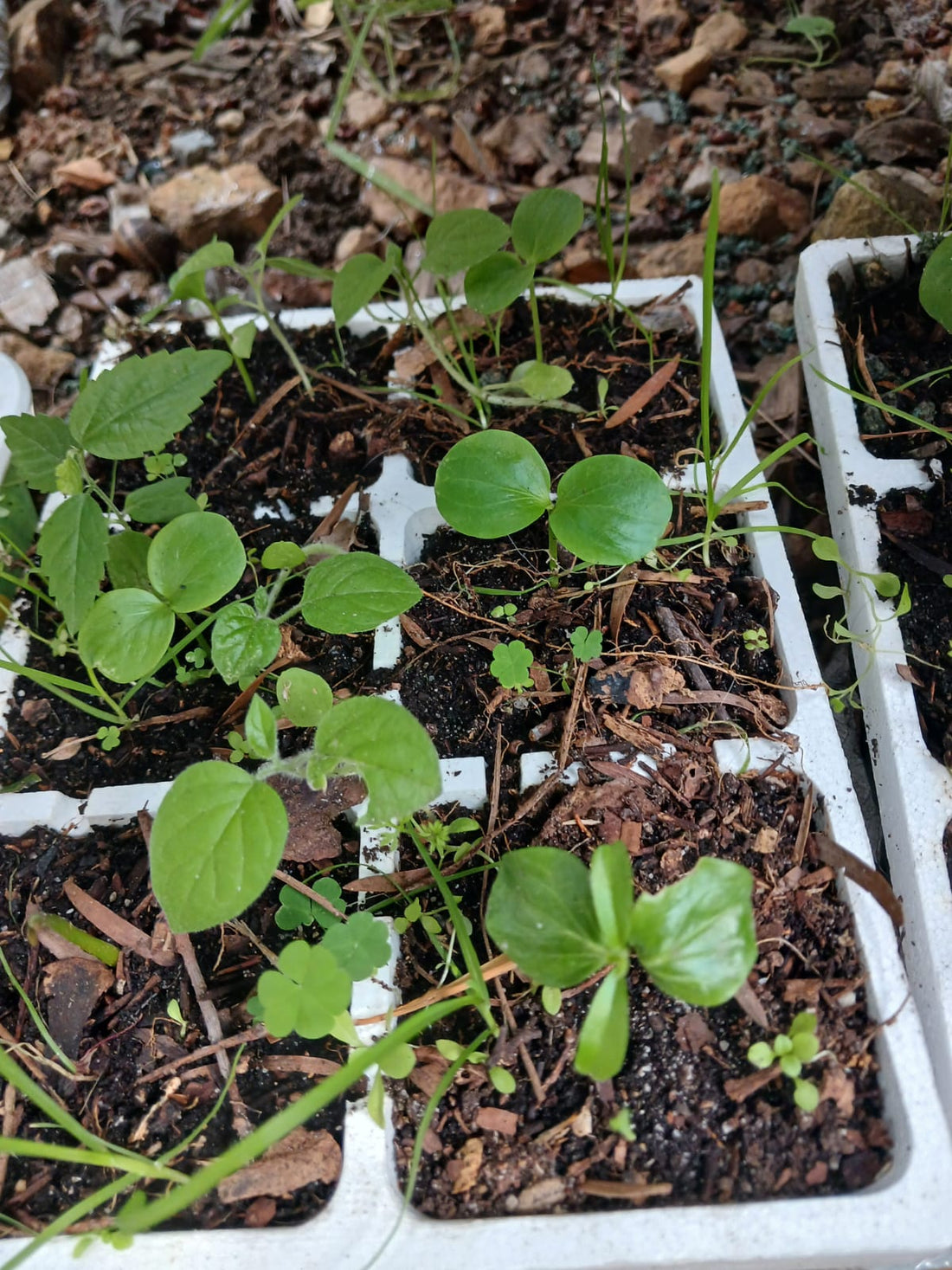
My Kei Apple Seedling Journey: Nurturing a Future for Bees and Beyond
Share
As a hobby beekeeper in South Africa, I’m always looking for ways to improve the environment around my bees. I’ve learned that providing diverse foraging material is essential, not only for my bees but for other pollinators as well. That’s why I was excited to come across the Kei Apple (Dovyalis caffra)—a native South African fruit that’s practically unknown outside of the country. Despite its exotic appeal in other parts of the world, this fruit had never crossed my path before, and I knew I had to plant it.
The Start of the Journey
In my search for plants that could benefit my bees, I came across Kei Apple seeds on Seedsforafrica. Although I wasn’t familiar with the specifics of propagating Kei Apples, my experience with propagating other plants gave me the confidence to give it a try. I didn’t do much research into the planting instructions, assuming that I could use my general knowledge. This assumption led to a small mistake: I planted the seeds too deep.
After two or three weeks, I was disappointed to see that none of the seedlings had emerged. But I didn’t give up, I knew I planted them slightly too deep and that It will take longer. I left them in the seed tray and patiently waited. I kept my faith in the process, continuing to care for them while managing other projects (including a move to a new home). It wasn’t until two months later that the first seedlings finally sprouted, I never expected it to take this long. That was a truly rewarding moment!
The Waiting Game and Overcoming Challenges
The process wasn’t without its challenges. During the early weeks, other seedlings began sprouting in the same trays—too many of them to be my Kei Apples. But instead of pulling them out, I remembered a scripture that resonated with me during this waiting period: "Let both grow together" (Matthew 13:30). I decided to leave them be, knowing that the time would come when I could clearly identify my Kei Apples from the rest.
I also planted some acacia trees in seed trays at the same time. At the new place I was sad to see that in the first night the snails got to the seed trays and had a go at my seedlings. None of the young thorn trees survived. Fortunately, my Kei Apple seedlings remained untouched. I keep the seedlings close to my front door, where I can easily water them every so often and monitor their growth. Our regular rainfall helped keep them healthy during this period of care.
The Kei Apple’s Growth and Unique Characteristics
As my seedlings grew, I noticed that the leaves were beginning to form, and a few plants were even producing their secondary, mature leaves. Seeing them sprout was incredibly satisfying. Propagating plants has always been a passion of mine, but there’s something special about growing a tree that can one day benefit both the bees and me.
The Kei Apple is a dioecious plant, meaning it has separate male and female trees. Since I planted 12 identical seeds, I’m not sure yet which ones will be male and which will be female. I ended up with 9 healthy seedlings, and I’m hopeful that at least one of each sex will develop. If not, I’ll source the missing sex and plant it nearby to ensure proper pollination.
The Future of My Kei Apple Trees
Once my seedlings are ready to be transplanted, I plan to move them into small 2-liter planting bags to mature over the next year. Eventually, when they’re strong enough, I’ll plant them out. The area I want to plant them in has clay soil, which can be tough for young plants. However, I’m prepared to address this in the future as the trees mature, making any necessary soil amendments to ensure they thrive.
I also have to protect the trees from grazing wildlife, so I’ll use wire mesh rings or crates to shield them during their early years. Once they’re established, they should be able to withstand the elements.
A Vision for the Future
One of the most rewarding aspects of this entire process is knowing that I am creating something for the future. The vision of these trees growing into strong, mature plants gives me something to look forward to. I hope that, along with providing for my bees, the Kei Apple trees will encourage more bird activity and support the broader ecosystem by attracting various pollinators.
I’ve always believed that we were created to nurture the planet, and this experience of propagation has only reaffirmed that belief. Watching something grow, whether it’s for the bees or for personal enjoyment, is a literal and metaphorical “fruit” of our labor.
In the past I have enjoyed planting a variety of plants and most vegetables. As a kid I tried to plant a tree every year. Hopefully I can establish this little tradition again. I once planted a Giant Pumpkin that eventually weighed a staggering 40kg at harvest. Hopefully I can try my hand at that again in the near future.
Conclusion
My Kei Apple seedlings are only at the beginning of their journey, but the excitement and anticipation for what’s to come are already palpable. I look forward to watching them grow, producing flowers and fruit, and becoming a valuable part of the garden ecosystem. This project, like so many others I’ve taken on, is about nurturing life and creating a future for both my bees and the environment around me.
Please reach out to me if you have Kei Apple growing somewhere or just have some comments to share.
Happy planting, Brecht.